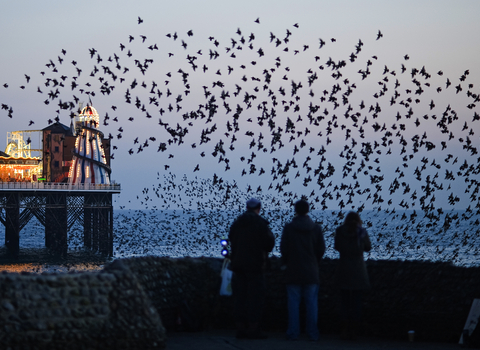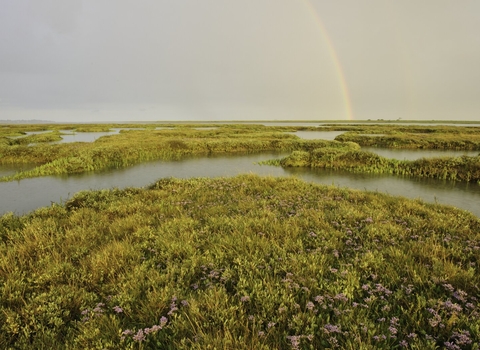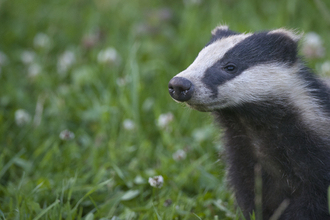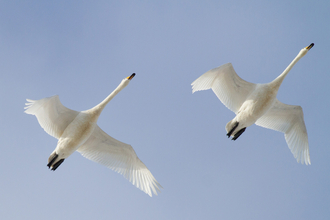
Local Action. Collective Impact. Global Change.
We need to restore nature at a global scale, on land and at sea. And it needs to happen now. Strategy 2030 provides the high-level framework of how we intend to go about it.
Download your copy of Strategy 2030:
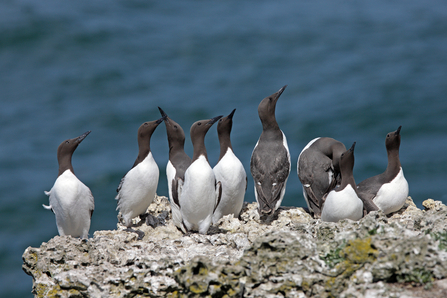
Alan Williams / naturepl.com
Our Vision
Our vision is of a thriving natural world, with our wildlife and natural habitats playing a valued role in addressing the climate and ecological emergencies, and everyone inspired to get involved in nature’s recovery.
Purpose
Our purpose is to bring wildlife back, to empower people to take meaningful action for nature, and to create an inclusive society where nature matters.
Approach
We are ambitious in our desire not just to slow but to reverse the declines in nature. We speak with a bold and confident voice, to tell the truth about the state of nature and what needs to be done to put it in recovery. As a grassroots movement, we are firmly rooted in our local communities where we look after wild places, increasing people’s understanding of and connection to the natural world, on land and at sea. We look to establish common cause and work in partnership with others, at both a local level and a UK-wide level, to develop new, innovative ways to do what’s right for nature and deliver impact in support of our vision. We demonstrate what is possible, and inspire, empower, and enable people from all ages, backgrounds, cultures, identities and abilities to bring about our vision with us, embracing the diversity of our society to change the natural world for the better. As a network of Wildlife Trusts, we work to ensure that our local actions, and our work through the four nations of the UK, add up to have a collective impact and help address global issues. Our differences are our strength, but we also strive to be more than the sum of our parts.
Three Strategic Goals
Our three strategic goals set out what we believe needs to happen by 2030 in pursuit of our longer term vision of a thriving natural world. Whilst set out as distinct, these goals are interdependent and highly connected, and achieving nature's recovery will require all three to be achieved.
Five Strategic Transformations
Achieving these ambitious goals will require The Wildlife Trusts to develop new ways of working. This strategy identifies five transformations in the collective capabilities of The Wildlife Trust movement that are essential to achieve our strategic goals. Each transformation will require resources, time, leadership, determination and coordination to be realised. Taken together, they will not only help us achieve our goals for 2030, they will also result in a much stronger and more effective Wildlife Trust movement for the longer term.
1) Supporting and developing Wildlife Trusts as strong and effective independent actors
Work independently, together
This strategy enables The Wildlife Trusts to work together collectively towards our shared strategic goals more than at any other point in our history. This starts with The Wildlife Trusts movement coming together to support and enable each Trust to play its part. We will work together to share best practice, skills, and knowledge, and embrace new solutions and ways of working to ensure no Wildlife Trust is left behind.
We are committed to building a well-coordinated, efficient, and respectful network so that all Wildlife Trusts are supported to operate at a consistent level, delivering impactful change across our movement and all areas Wildlife Trusts operate in. We will explore where there may be opportunities for groups of Trusts to share or merge ‘back office’ and other functions, to realise greater efficiencies and build organisational capabilities that may not be possible acting alone. We will help each other to ensure that leadership and governance structures within Wildlife Trusts and across the movement are underpinned by robust systems that promote a culture of sharing, learning, respect, and mutual trust, so that we can optimise opportunities for change.
Our transformative action will be to put much greater focus on the development of individual Wildlife Trusts, ensuring that all our members are supported to be impactful and effective actors for nature’s recovery. As a movement, we will jointly support Wildlife Trusts to adapt and manage their systems, structures, and approaches to be able to meet changing needs and to promote capacity, agility, and greater innovation.
Signals of success
- Local ownership - All Wildlife Trusts have their own strategy in place with clear, locally prioritised and locally owned goals that align with and demonstrate contribution to The Wildlife Trusts’ Strategy 2030.
- Consistent operations - Wildlife Trusts are working together to enable all members to operate on a consistent level across the movement and are contributing towards our collective vision.
- Adaptability - All Wildlife Trusts are able to capitalise on new and developing opportunities and effectively adapt to changing external events.
2) Working effectively as a distributed network and collective movement
Develop a cohesive network
The Wildlife Trusts’ greatest strength is that we are a knowledgeable, evidence-based, and independent network, with each Wildlife Trust firmly rooted within their local communities. The problems we face, such as declining biodiversity and a warming climate, do not adhere to political, administrative, or organisational boundaries. We know that the complexity and scale of the challenges - and opportunities - we face over the next 10 years and beyond will require us to transform the way we work together as a federation and distributed network. We are committed to working more closely as one movement of Wildlife Trusts.
We will improve awareness of togetherness between our members, promoting a culture of transparency, trust, and solidarity. We will build confidence and mutual respect between all parts of our movement as a foundation for more effective and efficient decision making. We will find new models of collaboration and provide an inclusive, constructive and respectful space for feedback so that everyone’s voice is heard. Our transformative action will be to develop and embrace new models of collaboration that are transparent, direct, and agile and enable us to be more cohesive as a movement.
As well as working more closely together, we need to engage with a wider and more diverse range of partners and actors within our communities and across administrative borders, embracing collaborative multi-stakeholder approaches to address common causes and achieve greater impact.
We will open ourselves up to more connections and transformative partnerships that prioritise collective action and joint problem-solving, including those outside the traditional, mainstream conservation sector. We will work in closer partnership with communities, landowners, farmers,
fishers, businesses, and other organisations to ensure that nature is in recovery everywhere. We will make sure that our local knowledge and connection to the diverse communities of the UK and Crown Dependencies is our strength and that together, we are more than the sum of our parts.
Signals of success
- Cultivating connections - Increased connections between Wildlife Trusts at all levels are having a measurable effect on our impact.
- Embracing change - Wildlife Trusts embrace structural and behavioural changes, leading to greater co-development and creation
- of more opportunities to work together.
- Sharing knowledge - Strong and effective communities of practice are thriving, promoting knowledge sharing and collaboration between trustees, staff and volunteers right across The Wildlife Trusts movement.
- Working in partnership - Wildlife Trusts have significantly widened the scope of partners and networks that they engage with, and there is evidence of improved impact as a result.
3) Inspiring community organising and mobilising, especially amongst young people
Empower our communities
We know that if nature is to be restored at scale, we need many more people on nature’s side. Volunteering and civic mobilisation will be key to creating a more inclusive society where nature matters, and Wildlife Trusts embedded in facilitators for change. However, we also realise that advances in digital technologies have revolutionised the very nature of ‘community’ and that the way in which people connect, organise and mobilise to bring about change is continuously evolving. All Wildlife Trusts have a dedicated network of committed volunteers which are crucial to our work.
We must continue to embrace the activity they do whilst widening our scope to the many people within our communities trying to mobilise in a different way for a better world for nature. This would necessarily have to include offering a larger range of opportunities, especially to young people. We need to understand the different motivations of different sections of society and respect their personal relationship with nature, using empathy and understanding for how they value nature, using this to inform our approaches. We will ensure that young people are consistently engaged in good quality regular activities, some of which are youth-led, that respond to their needs and aspirations.
We will upskill them for their personal development, encouraging a stronger connection with and a sense of responsibility for the natural world. We are committed to including young people in our decision making processes. We will work with them to make a positive change within our movement and in their communities for their lives and the environment. Building on the ‘Team Wilder’ approach already being pioneered by some Wildlife Trusts, we are committed to reframing volunteering and community action, to become more open and inclusive, and to be led by our supporters. We will develop more flexible, open, and complementary approaches so that we broaden our skills alongside being volunteer managers and work more as community facilitators; enabling, inspiring, and catalysing a new cohort of community organisers for nature. We will engage people from a wider range of ages, backgrounds, cultures, identities and abilities, and listen and learn so that we can understand the barriers to peoples’ connection with nature and The Wildlife Trusts and tackle them so that our work is more inclusive. We will ensure that everyone has the opportunity to learn about nature through first person experiences, leading to how they can take action – whether through formal education or informal learning.
Our transformative action will be to provide a platform that can inform, connect, and support communities’ own efforts to restore nature, with a particular focus on the efforts of young people and self-organising groups, creating opportunities for them to step into the space of community action and campaigning. We will ensure greater connectedness of our supporters, including across borders and between different groups and communities, more effectively utilising digital approaches and supporting them to develop new initiatives and campaigns to protect and restore wildlife.
Signals of success
- Widening participation - Increased numbers and diversity of volunteers and supporters who are connected and engaged in good quality regular activities that respond to their needs and aspirations.
- Enabling local action - More ambassadors, representatives and supporters from Wildlife Trusts are embedded within local action groups, empowering and supporting people to take action locally.
- Supporting the next generation - Strong quantitative and qualitative evidence that we are connecting, working together and supporting a new generation of young and diverse community-based change makers.
- Creating new leaders - Increased numbers of people from all ages, backgrounds, cultures, identities and abilities, especially young people, are included in our decision making processes and have leadership roles.
4) Undergoing a ‘root and branch’ digital transformation
Embrace a digital culture
The rapid advancement of digital technologies in recent years presents unprecedented opportunities to increase the impact of our work, to adopt innovative approaches to new and existing challenges, and to broaden and enhance our engagement. However, we also recognise that these advancements bring new challenges, threats, and vulnerabilities that will need to be addressed in the coming decade. We are committed to trialling and experimenting with new and innovative technologies, ensuring that we use digital approaches to maximise our impacts, from intelligent and strategic use of geospatial information and ecological data through to greater engagement with new audiences, and promoting knowledge sharing and collaboration across our movement.
We will promote a digital culture to transform our existing systems and infrastructure, and increase the capability of our movement to store and handle data. We will be proactive in horizon scanning for opportunities in digital innovation, as well as emerging risks in areas such as data ethics, access, protection and rights, and information security. We will provide our staff with the training and resources to develop their digital skills and capability, building our movement’s resilience to a changing external digital landscape.
Our transformative action will be to embrace and integrate the necessary culture, structures, and technology to support a root and branch digital transformation. This will include significant investment in training to develop the digital skills and capabilities of our members, as well as in systems and infrastructure, building our capacity to store and handle data.
Signals of success
- More aware - All Wildlife Trusts understand the value and impact of effective digital infrastructure.
- More informed - Insights and analysis from digital technologies and innovations are enabling and streamlining strategic and operational decision making.
- More skilled - Wildlife Trust staff and volunteers have significantly enhanced their skills and capacities in digital solutions.
5) Delivering a step-change in the scale and diversity of funding for nature’s recovery
Fund a better future
We know that the complexity and scope of achieving our vision is greater now than it has ever been, both because of the scale and urgency of the climate and ecological emergency, and its relevance to peoples’ lives and livelihoods. Delivering this movement-wide strategy will require a step-change in scale and diversity of the funding available for nature’s recovery. The Wildlife Trusts exist thanks to the strong funding base provided by our loyal members, now numbering over 870,000. This has been built up steadily through fundraising and marketing activities at the local level – an approach that will always be key to the strength and distinctiveness of our movement. We know, however, that many of the fundraising and membership recruitment approaches now being deployed successfully by other charities – not least digital fundraising – are effective because of the economies of scale that are only available through coordinated collective fundraising programmes.
Our transformative action will be to work together more closely so that we can complement our local fundraising programmes with large scale digital
fundraising approaches, to reach new audiences and deliver strong additional growth in The Wildlife Trust membership base. Achieving the funding required to deliver this strategy will also require The Wildlife Trusts to explore new partnerships and business models, new ways of working, and alternate sources of capital and financing – while protecting our independence and integrity.
Signals of success
- Access to resources - Wildlife Trusts have access to greater and more diverse range of resources, which remain principled and aligned with our values.
- Innovation - In collaboration with partners, Wildlife Trusts are investing in and implementing innovative financing models that align with our vision of a thriving natural world.
- New revenue streams - Digital fundraising provides Wildlife Trusts with a broader and more diverse membership base, with new revenue streams enabling a scaling up of charitable impacts.
Building our collective impact and influence
By working together as The Wildlife Trusts and harnessing our collective impact, we are able to imagine, campaign and advocate for real change. We will achieve increased collective impact and gain greater influence by building on our successes, telling compelling stories, and empowering local communities to become agents of change.
Read on
Capitalising on the work of Wildlife Trusts, we will build on our mass audience strategic campaigns to mobilise existing members and build a stronger community organising base – Team Wilder – resulting in more local action for nature, including increased engagement in citizen science projects. This will lead to more inclusive, welcoming, diverse, growing communities of people amplifying and shaping nature’s recovery, resulting in positive, tangible change for nature and people and improving the evidence base from which Wildlife Trusts inform their work.
Transforming the way that The Wildlife Trusts manage our digital infrastructure, these stories of people powered nature’s recovery and increased knowledge of nature in local areas will empower local communities further, inform dynamic personalised content for segmented audiences, and inspire more people to join Team Wilder in recognition of the positive change achieved by Wildlife Trusts.
This will levy increased public support for The Wildlife Trusts, which we will demonstrate to further our impact and influence, strengthen The Wildlife Trusts brand both within the UK and internationally, and enable our mass audience campaigns to build an increasingly stronger and more diverse community organising base.
Five Enabling Priorities
We have identified five enabling priorities that represent the most important foundations we need in place to enable us to realise our strategic goals and achieve the transformations set out in this strategy. These actions form a continuous process that underpins our collective ability to achieve our vision of a thriving natural world.
1) Getting our own house in order
The Wildlife Trusts can only make an authentic contribution to tackling the climate and ecological emergency by ensuring our own house is in order.
As major owners of land, energy users, consumers of water, catering providers, event organisers, venue providers, vehicle fleet operators, educators, retailers, and consultancies (to name just some of our services), as well as employers and members of the business community, we recognise that we need to lead by example in how we manage our own environment and community impacts.
We will work together to establish a comprehensive programme to reduce our environmental footprint and set ambitious targets in relation to key areas such as carbon emissions reduction, use of chemicals on land, and renewable energy generation. We will take pride in being a federated movement and develop common principles and a shared framework on core services, to ensure that our resources are spent where they are most needed. We will develop new models of collaboration to enable greater alignment and consistency on our approach to key issues such as carbon accounting, safeguarding, and pesticide use.
2) Ensuring our nature reserves and land assets are the foundation for nature’s recovery
The Wildlife Trusts manage some of the best nature reserves and wildlife habitats across the UK and Crown dependencies, both on land and at sea. Our work protecting and improving these sites will always remain integral to our collective vision and are a vital part of ensuring our most vulnerable wildlife do not disappear forever. However, our nature reserves have increasingly become the last remaining fragments of wildlife habitat within a degraded landscape. These areas must be managed as the foundational building blocks for nature’s recovery, and as spaces for people to join us and create relationships with nature within their communities.
We will seek to restore, expand, and connect nature reserves that are small and isolated, working in partnership with landowners, farmers, developers, and local authorities to ensure more land is managed for nature. We will seek to improve the way our nature reserves interact and integrate with the wider land and seascape and with local communities, where they can play a strategic role in linking together wildlife and people.
3) Develop clear and consistent evidence-based policies
Over the next 10 years, we will face new and emerging challenges that will require us to have a wide range of clear policy positions as a movement on key issues. Many of these challenges and emerging issues will be complex and vary locally, impacting differently on individual Wildlife Trusts. Addressing these challenges will require the breadth of our collective knowledge to shape credible and authentic policy responses. By taking a clear and confident position for nature, we embrace our commitment to stand up for nature and engage others to connect with us and join our efforts.
We will use our convening and diplomatic capacity to develop a standard way of discussing and agreeing policies across our movement, so that The Wildlife Trusts can be a strong, unified voice for nature. We will continue to ensure that our positions are underpinned by high quality data, local expertise, and technical analysis, and be evidence-led in our policy advocacy.
We will work closely with our partners who record and monitor local wildlife, such as the network of Ecological Record Centres, and with wider members of the public who gather invaluable data on the state of nature, for example through Shoresearch, our intertidal survey programme, and Seasearch, our diver-led subtidal surveys. These citizen science efforts are critical to ensuring robust and credible data is used to monitor the health of our wildlife.
4) Invest in a high-skilled and diverse staff and volunteer network, and build a movement-wide learning culture
Wildlife Trusts hold a wealth of skilled, motivated, and dedicated staff, with extensive local knowledge of habitats, species, land use and public engagement, supported by a committed volunteer network. The challenges we face over the next 10 years will require Wildlife Trusts to develop staff skills in new and emerging fields including net gain, nature-based solutions, land management advice, community action, and wellbeing.
We will train our staff in new and developing areas of nature conservation, identify where specialist knowledge is located within the movement, and promote a network of sharing to ensure that all Trusts can access the knowledge and skills to maximise the collective impact of our movement.
We will support our staff to improve the coordination and mobilisation of our volunteer and supporter networks, increasing the ways in which people and communities can contribute to nature’s recovery. We also know that we need to become more relevant to more people by increasing the diversity of our Trustees and staff, reflecting the wider society we are part of. Wildlife Trusts will cultivate a culture where our staff, Trustees, and volunteers are Wild About Inclusion, where inclusivity and respect are at the heart of what we do in order for everybody to be their authentic self and reach their full potential.
Our movement will be led by diverse, inclusive, and effective leaders who embrace the challenge of increasing our diversity and its contribution to our movement and to wildlife. We will increase our engagement with diverse communities, to better understand and overcome barriers to accessing and engaging with nature.
5) Speak with a bold and confident voice, further increasing our impact and influence
Wildlife Trusts have a strong status in the environmental community, associated with credibility and a reputation as a voice for nature. Our strength is that we are rooted in local, diverse communities, from countryside villages to urban hubs and coastal communities, with a strong local focus set within a collective network and influence.
As we come together more as a Wildlife Trust movement, aligned under a common strategic framework, working towards shared goals, there is an opportunity for us to raise our profile, and speak with a stronger, bolder, more confident tone of voice – both locally and collectively. This will enable us to further increase our impact and influence, and build a strong, refreshed, and recognisable brand that speaks to the core values and aims of our movement and helps to articulate the societal value of nature.
We will continue to work collaboratively with a wide range of existing and emerging networks and partnerships, and expand our reach to engage new and diverse audiences, making full use of digital platforms to modernise our public engagement and recognition.
We will grow our presence and profile in towns and cities, to engage with the full breadth of the communities where we work, and actively express this in our communications and imagery. We will also act as a facilitator to empower individuals and communities to speak with their own voice and with confidence on their concerns and ambitions for nature and their lives. By making available our platforms to them we will ensure that multiple voices are heard and multiple perspectives presented.
Our Shared Values
The Wildlife Trusts share the following fundamental values and beliefs, which underpin our work across the movement.

Passion
Everything we do is driven by our desire to make the world a better place. Our passion for nature is the prime motivator for our skilled, motivated and dedicated team. We focus our energy on where we are uniquely placed to deliver the most impact for wildlife, enabling us to work with purpose and focus.
Respect
We act with respect for nature, respect for people, and respect for diversity. We work collaboratively and champion inclusion and diversity within our communities, being locally sensitive whilst ensuring that we have impact beyond our borders.
Trust
We seek first to find the common ground. We accept that difference, competition and conflict exist, but we work openly, collaboratively and with tolerance.
Integrity
We are committed to transparency and inclusivity within our actions and projects, co-designing to deliver the greatest impact for nature. We will always uphold our values and beliefs and speak truth to power.
Strength in diversity
We are comprised of 47 independent organisations that work as one movement, who hold unparalleled knowledge of the wildlife and natural systems within their communities across England, Wales, Scotland, Northern Ireland, Isle of Man and Alderney. We celebrate our differences and work to our common strengths.
Pragmatic activism
We seek radical change and bold thinking, but we are evidence-led and solution-focused and are convinced that working with partners and communities is the way to maximise our impact for nature.
We are part of the natural world, and wildlife is relevant to every part of our lives; everything we do has an impact on it, and the natural environment affects our health, our wealth and our state of mind.
Our Progress
Each year, The Wildlife Trusts collectively measure progress towards the goals and priorities set in Strategy 2030, assessing both Wildlife Trust-owned progress and external factors where possible. The Impact Measures Report is produced annually and looks at a set of indicators that have been chosen to demonstrate whether there has been positive or negative progress towards a particular goal. Read our report below.

